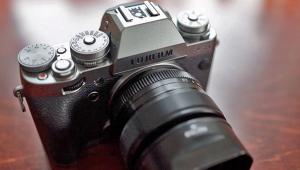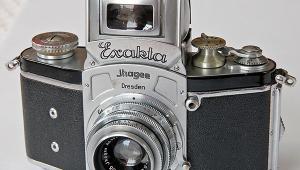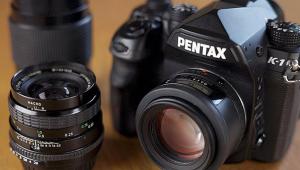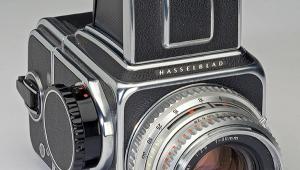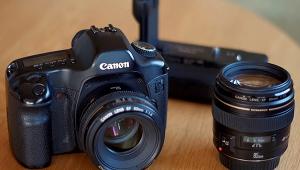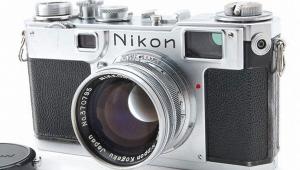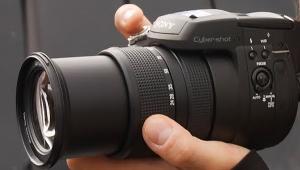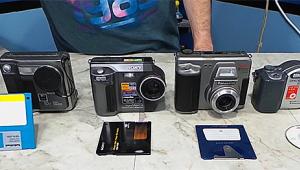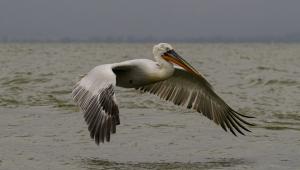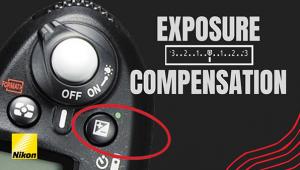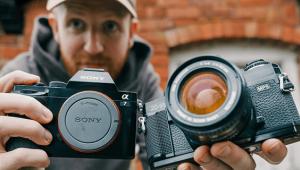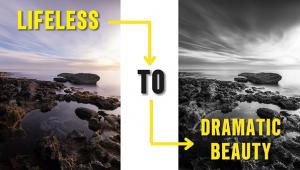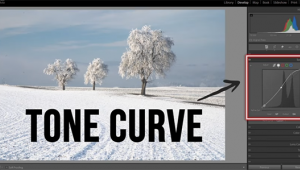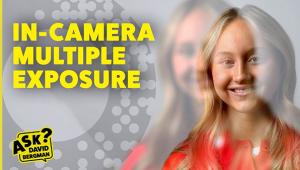Topcon RE Super: The First 35mm SLR With TTL Metering
Cameras with built-in meters were not rare in the 1960s, but the problem with camera meters before the Topcon RE Super was that the cell took in a different view than that of the lens. Using a standard lens that was mostly okay, but if a wide-angle or telephoto lens were fitted, changing the field of view and the part of the subject needing to be accurately metered, it was a different matter.
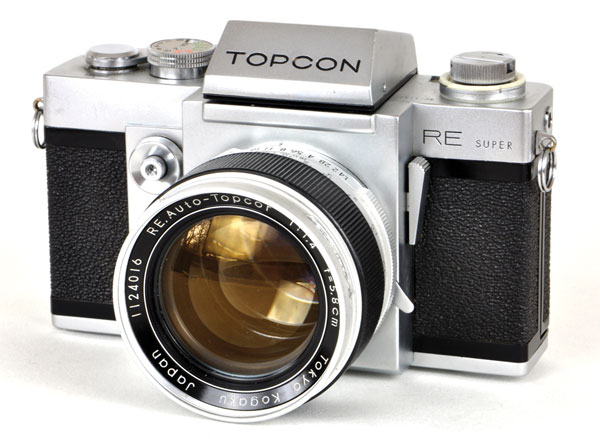

Then there were the problems that arose when fitting extension tubes or bellows, demanding an increase in exposure as the lens was moved further from the camera body. Or the factors that needed to be taken into account when adding colored filters.
If a meter was to indicate a true reading for the subject, irrespective of the lens in use, its extension from the body, or any filter factor, the exposure reading needed to be taken through the lens itself so that it measured the intensity of light actually falling on the film. That was the problem that the Tokyo Optical Company took on and solved in 1963 with the launch of the world’s first 35mm SLR with Through-The-Lens (TTL) metering.

Photos Above © John Wade
Mirror-Meter
The Topcon RE Super worked by use of what the makers called a Mirror-Meter. This was a specially adapted reflex mirror, placed in the usual position behind the lens, but with a pattern of transparent lines etched into it. Each one, around 0.05mm wide, allowed some light to pass through the mirror to a cadmium sulfide meter cell attached at the rear. The system “stole” about 7 percent of the light which should have reached the viewfinder, and the meter was calibrated accordingly.
This meager amount of light was not enough to seriously dim the image which the rest of the mirror reflected to the viewfinder via a penta-prism in the usual way. Take the lens off a Topcon RE Super and look at the mirror and those lines are plainly visible, but the surface of the mirror is not in focus when the lens is focused on the subject, so the lines are invisible in the viewfinder. The camera was mechanical, but needed a battery to fire up the meter.
Film Speed Readings
In use, the film speed, which ran from 10 to 800 ASA (similar to the ISO settings we use today), was first set in a window found in the shutter dial. The exposure was set by use of a needle that appeared in a separate small window at the base of the viewfinder as well as in a tiny window in the camera’s top plate, next to the rewind knob.
Setting the shutter speed first, the aperture ring was turned until the needle fell in the center of a V-shaped index mark. The twin peaks of the “V,” each side of that central area indicated half stops in exposure—a decrease of half a stop on the left and an increase of half a stop on the right. Alternatively, the aperture could be set first and then the shutter dial turned until the needle fell into the correct position. If light conditions were such that readings could not be taken, a black band covered the needle.
The shutter, which offered 1 second to 1/1000 sec plus “B,” was released by a button on the front of the camera to the left of the lens, and there was a delayed action lever below it, plus a stop-down lever on the other side of the lens to show depth of field in the viewfinder.

© John Wade
Viewfinders
But there was more to the Topcon RE Super than a revolutionary metering system. It also offered a choice of eye-level or waist-level viewfinders, interchanged by pressing a small stud on the top plate and then sliding the viewfinders off and on.
It also offered a choice of four focusing screens, interchangeable when either viewfinder was removed. The one most usually supplied with the camera was ground glass with a split-image rangefinder in the center, surrounded by a fine focus ring and incorporating a Fresnel-type lens to increase edge and corner illumination. The second was ground glass and Fresnel with a central clear spot. Number three was similar, but with a grid pattern at 6mm intervals. The last was similar to the second, but with crosshairs in the clear central spot and millimeter scales along the right and bottom edges, useful for scientific work.

Courtesy of Don Baldwin
Flash
For flash photography, the camera had the usual sync socket, located on the end of the body, adjacent to the rewind knob. But it also had a special accessory flash coupler, which slotted over the rewind knob with a bayonet fitting. Once in place, electrical connections were made with the body so that the adapter became what would later be known as a hot shoe. Using Topcon’s own Type II bulb flash gun, all the connections were now made for flash photography without the necessity of a lead plugged into the sync socket. A lightweight electronic flash with suitable connections could also be used in this adapter.
Camera System
The Topcon RE Super was designed from day one to stand at the heart of a complete system with lenses which fitted to the camera body via an Exakta-style mount. They included a range of RE Auto-Topcor lenses which allowed metering at full aperture, prior to stop-down to the taking aperture, and R Topcor lenses which coupled the meter to the lens diaphragm and so only measured exposure when the lens was set at its taking aperture. Focal lengths ranged from 25mm wide angle to 300mm telephoto.
Accessories for the Topcon RE Super included a range of lens hoods; filters for monochrome and color photography; the Topcon Lens-Lite exposure meter, which was more sensitive than the one incorporated into the camera body; extension tubes; bellows attachments; a slide copying attachment; and a microscope attachment.

Courtesy of Don Baldwin
Back in 1963, the innovation of SLR TTL metering must have marked the RE Super down as a camera that would evolve into one of the all-time great names. But by the 1970s, its star had been eclipsed by the likes of Pentax, Canon, Nikon, etc. Today, outside of the collectors’ world, it’s a largely forgotten name.
Approximate Values
The approximate values for the cameras mentioned in this article are as follows: Topcon RE Super, $250; Twin Lens Contaflex, $1500; Super Kodak Six-20, $2000; Savoyflex Automatic, $150; and Mec 16SB, $80. (Prices quoted for cameras in good condition.)

© John Wade
Other In Camera Metering Firsts
1936, Twin Lens Contaflex: First camera with a built-in exposure meter. Also unusual in being a twin lens reflex designed for 35mm film.
1938, Super Kodak Six-20: The first fully automatic exposure camera, in a folding model for 620 size film.
1959, Savoyflex Automatic: The first 35mm SLR to offer shutter priority automatic exposure, measured by a selenium cell above the lens.
1961, Mec 16SB: A 16mm subminiature that was actually the first camera to incorporate TTL metering, before the RE Super introduced the concept to SLRs for the first time.
- Log in or register to post comments
